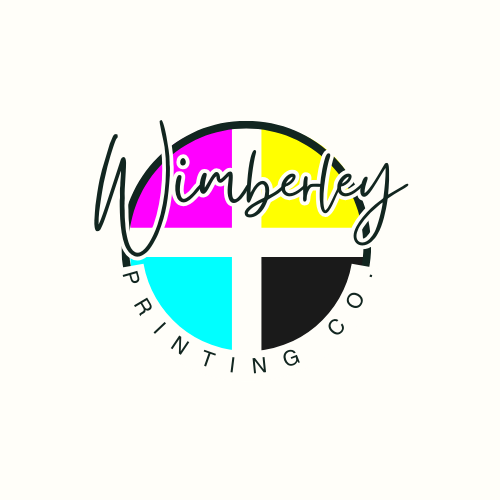The History of Printing: From Gutenberg to Modern Techniques
Share
Printing has revolutionized the way we share knowledge, tell stories, and communicate ideas. It’s easy to take for granted how accessible printed materials are today, but the history of printing is a fascinating journey spanning centuries of innovation and creativity. From Gutenberg’s first movable type press to today’s cutting-edge digital and 3D printing technologies, the evolution of printing has transformed industries and societies around the world.
In this blog post, we’ll explore the history of printing, highlighting key milestones that have shaped the art and science of the industry.
Early Beginnings: Woodblock Printing (Before 1440)
Printing began long before the invention of the printing press. The earliest known form of printing was woodblock printing, which originated in China around 200 CE. In this technique, text or images were carved into wooden blocks, inked, and pressed onto paper. This method was labor-intensive but allowed for the replication of texts and images.
Woodblock printing spread to other parts of Asia and eventually Europe, laying the groundwork for future innovations.
The Game-Changer: Gutenberg’s Movable Type Press (1440s)
The true printing revolution began in the 1440s when Johannes Gutenberg, a German goldsmith, invented the movable type printing press. Gutenberg’s innovation used individual metal letters that could be rearranged to create text, making it much faster and more efficient than woodblock printing.
Gutenberg’s most famous work, the Gutenberg Bible, was printed in 1455 and is considered a masterpiece of early printing. This invention not only made books more affordable and accessible but also fueled the spread of knowledge during the Renaissance.
Key impact:
- Enabled mass production of books.
- Standardized texts and knowledge-sharing.
- Paved the way for widespread literacy.
Printing Spreads Across the Globe (1500s-1700s)
Following Gutenberg’s invention, printing presses spread rapidly across Europe and beyond. By the 1500s, thousands of books, pamphlets, and newspapers were being printed, fueling movements like the Reformation and the Enlightenment.
Key developments during this time:
- Copperplate Engraving: Introduced in the 16th century, this method allowed for detailed illustrations in books.
- Letterpress Printing: Refined versions of Gutenberg’s press became the standard for book production.
By the 1700s, printing presses had become integral to communication, helping shape political movements like the American and French revolutions.
Industrial Printing: Steam-Powered Presses (1800s)
The Industrial Revolution brought significant advancements to printing. In the early 19th century, steam-powered printing presses replaced manual labor, dramatically increasing production speed. Innovations like the rotary press (1843) allowed for continuous printing on rolls of paper, making newspapers and other materials more widely available.
Other notable developments:
- Lithography (1796): Allowed for high-quality color printing and detailed illustrations.
- Offset Printing (1875): Introduced a method that transferred images from a plate to a rubber blanket before printing, enhancing quality.
These advancements made printed materials more affordable and accessible to the general public.
The Rise of Digital Printing (Late 20th Century)
The late 20th century saw a technological revolution in printing with the advent of digital printing. Unlike traditional methods, digital printing doesn’t require plates or long setup times, making it perfect for short runs and quick turnarounds. The introduction of laser and inkjet printers in the 1980s brought printing into homes and offices.
Key benefits of digital printing:
- Faster production times.
- On-demand printing with no need for large runs.
- Personalization and variable data printing.
Modern Innovations: 3D Printing and Beyond (21st Century)
In recent years, 3D printing has pushed the boundaries of what printing can achieve. Using additive manufacturing, 3D printers build objects layer by layer from digital designs. This groundbreaking technology has applications in industries ranging from healthcare to automotive to architecture.
Other modern advancements:
- UV Printing: Allows printing on a variety of materials, including glass and metal.
- Sustainable Printing: Focuses on eco-friendly practices, such as using recycled paper and water-based inks.
Why Printing Still Matters Today
Despite the rise of digital media, printing remains as relevant as ever. Printed materials provide a tactile, trustworthy, and lasting medium for communication. From beautifully bound books to vibrant marketing materials, printing continues to connect people and ideas in meaningful ways.
Printing Excellence at Wimberley Printing Company
At Wimberley Printing Company, we take pride in being part of this centuries-old tradition while embracing modern innovations. Whether you’re looking to print a timeless hardcover book, a set of professional brochures, or large-scale banners, we bring expertise and craftsmanship to every project.
With over 35 years of experience, we combine time-tested techniques with the latest technologies to deliver exceptional results. Contact us today to learn more or to get started on your next printing project.
